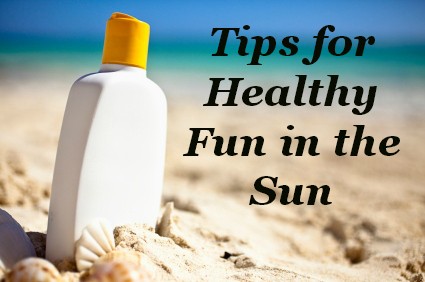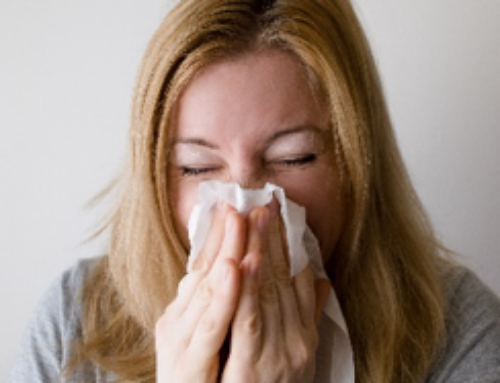One of the great joys of summer is taking a little time for some fun in the sun. Your concierge doctor’s office hopes that you are enjoying the warm rays with safety in mind. Make sure you’re not getting too much of a good thing! Avoid consequences of overexposure like sunburns, premature aging of the skin, wrinkling, and skin cancer by practicing proper sun protection. While using sunscreen daily is a prudent first step, there is more to know about staying safe and healthy when you’re out in the sun.
1. Get UV-A and UV-B protection
Always opt for a sunscreen that provides both UV-A and UV-B protection. This way, you’ll protect your skin from ultraviolet-B (UV-B) rays, which cause sunburns and skin damage, as well as ultraviolet-A (UV-A) rays that increase your risk for skin cancer. Also, make sure the sunscreen you choose contains zinc oxide or titanium dioxide. These ingredients help to block both UV-A and UV-B rays.
2. Choose SPF 30 or higher
Always use a sunscreen with SPF (Sun Protection Factor) 30 or higher. The SPF in your sunscreen absorbs and reflects the sun’s rays so they don’t burn or damage your skin.
Keep in mind, though, that higher isn’t that much better when it comes to SPF numbers. A higher SPF can give people a false sense of security when out in the sun and therefore tend to not apply enough or as frequently as they need.
Here’s why: SPF protection doesn’t increase proportionately with the designated SPF number. So while SPF 30 absorbs 97% of the sun’s burning rays, SPF 50 absorbs just slightly more — 98%. The added protection is great, but be aware that higher SPFs don’t reduce risk of burning or cancer by any significant degree.
3. Apply sunscreen early and often
Your skin can take up to a half-hour to absorb sunscreen, so plan ahead and apply sunscreen 30 minutes before going outside.
And, don’t skimp! For sunscreen to do its job effectively, you need to apply one ounce (about a golf ball) to every area of exposed skin. That includes your lips, ears, feet and back of the neck.
4. Reapply sunscreen every two hours
Sunscreen wears off much more quickly than most people realize, so be sure to reapply every 2 hours.
In some cases, you should reapply sunscreen every 60 to 90 minutes such as when using a spray sunscreen (it washes off more easily) or when you’re swimming or sweating. Be even more diligent with application when you’re around water, snow and sand because they can intensify the sun’s rays and cause a greater burn.
5. Be choosy about sunscreen ingredients
What you put on your skin can be absorbed into your body. You should avoid sunscreens containing harmful chemicals. Shop wisely and buy mineral sunscreens – they create a physical barrier to block UV rays and aren’t absorbed into the body.
Ingredients to Avoid:
- Oxybenzone (benzophenon-3) – found in 52% of sunscreens
- Octyl methoxycinnamate (OMC) – found in 29% of sunscreens
Ingredients to Choose:
- Zinc oxide – found in 36% of sunscreens
- Titanium dioxide – found in 23% of sunscreens
- Avobezone – found in 49% of sunscreens
Also, the addition of vitamin A (retinyl palmitate) to sunscreens may speed development of skin tumors and lesions when you apply sunscreens while in the sun. The Environmental Working Group cites an FDA study of vitamin A’s photocarcinogenic properties – the possibility that it can promote cancerous tumors when used on skin exposed to sunlight. Scientists have known for some time that vitamin A can spur excess skin growth (hyperplasia) and that in sunlight it can form free radicals that damage DNA.
Based upon these recommendations, the EWG put out a list of approved sunscreens that is an excellent buying guide.
6. Don’t rely on sunscreens alone
Unfortunately, no sunscreen can completely prevent sunburns, blisters and skin cancer. Further evidence has shown that even with sunscreen use, rates of melanoma have increased. We definitely don’t recommend AGAINST sunscreen use, but following these tips will help ensure greater protection when out in the elements.
- Wear a tightly woven hat with a wide brim and sunglasses with UV protection that cover your face
- Wear long sleeve shirts or pants made from cool, breathable materials like cotton and linen
- Avoid prolonged sun exposure the sun from 10 a.m. to 4 p.m. when the sun’s harmful UV rays are strongest.
7. Summer skin savers
Sometimes accidents happen and we get a burn. Here are some natural remedies to take away the sting:
- Aloe vera: antioxidant and anti-inflammatory properties soothe and cool burned skin. Fresh from the plant is best, if possible.
- Apple cider vinegar: helps balance the pH of sunburned skin, reduces blistering, and promotes healing.
- Cold shower: the tried and true method of aspirin and a cold shower can work wonders.
Interested in learning more about measures you can take to stay safe and healthy this summer? Contact us, Boston’s concierge medical group dedicated to your well-being no matter the season!
To your health!







Leave A Comment